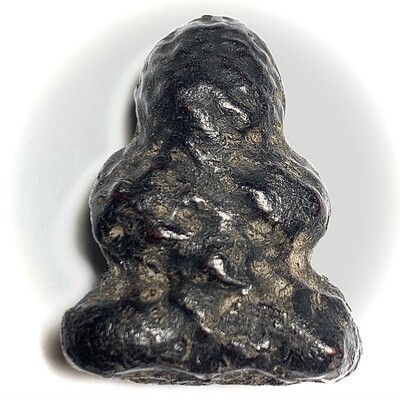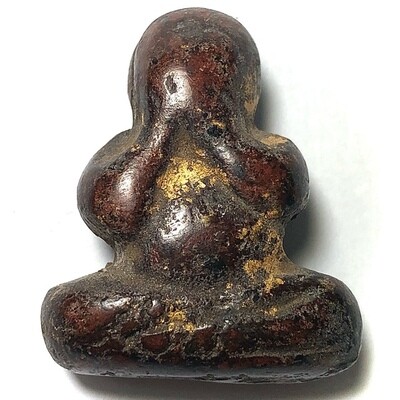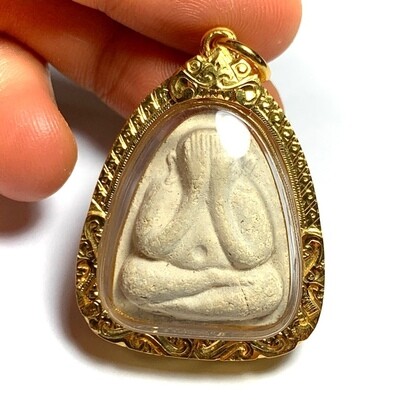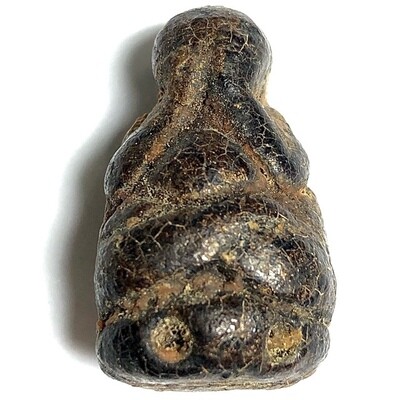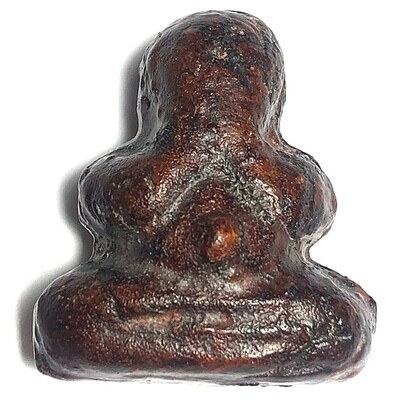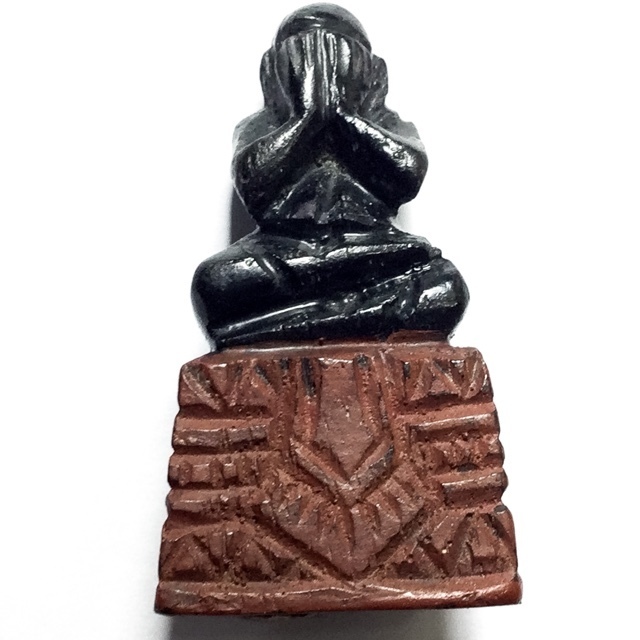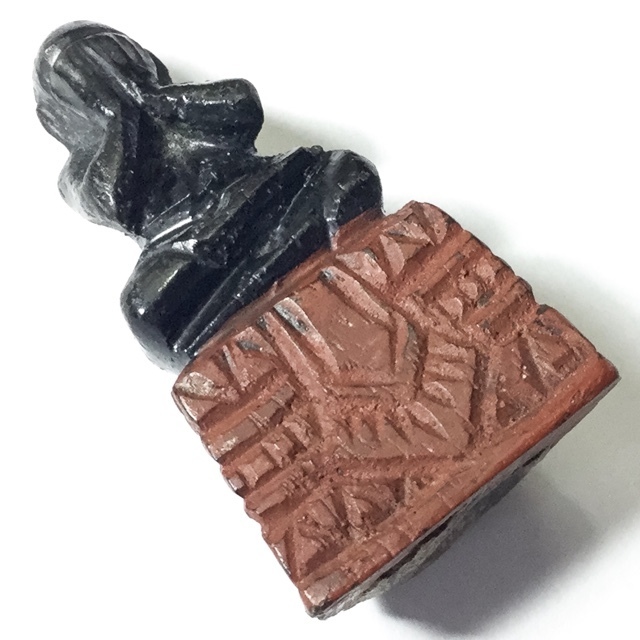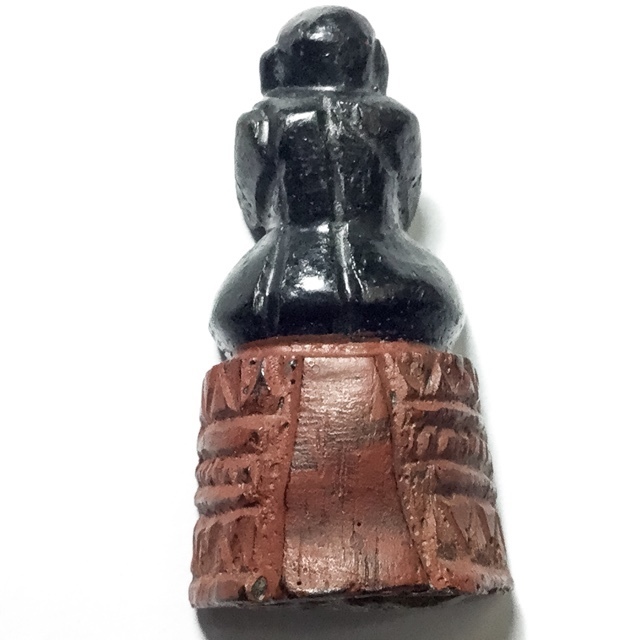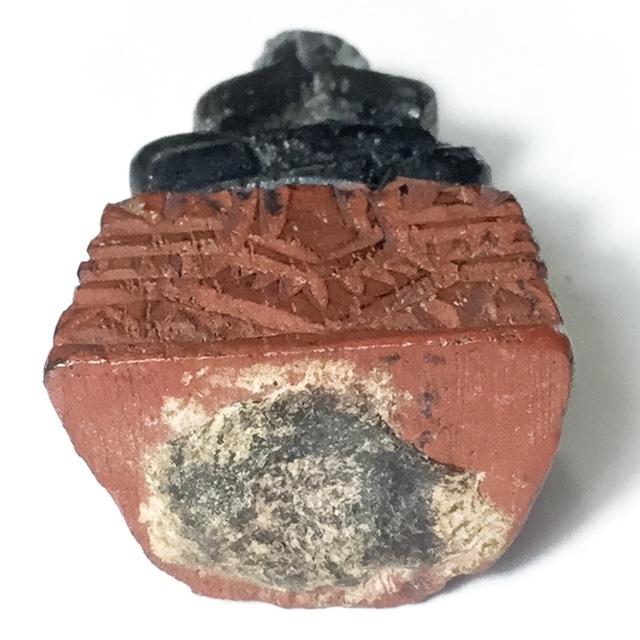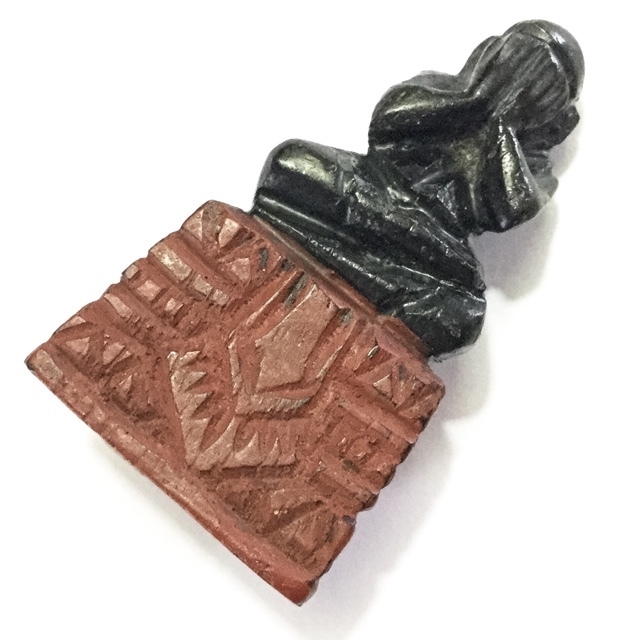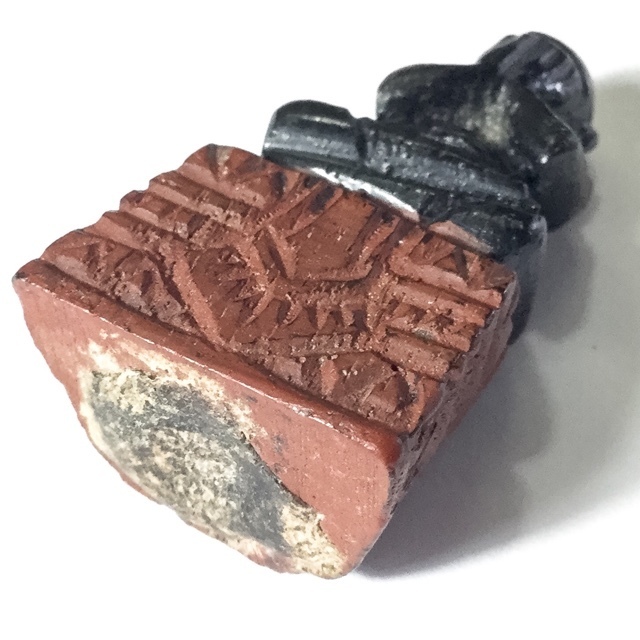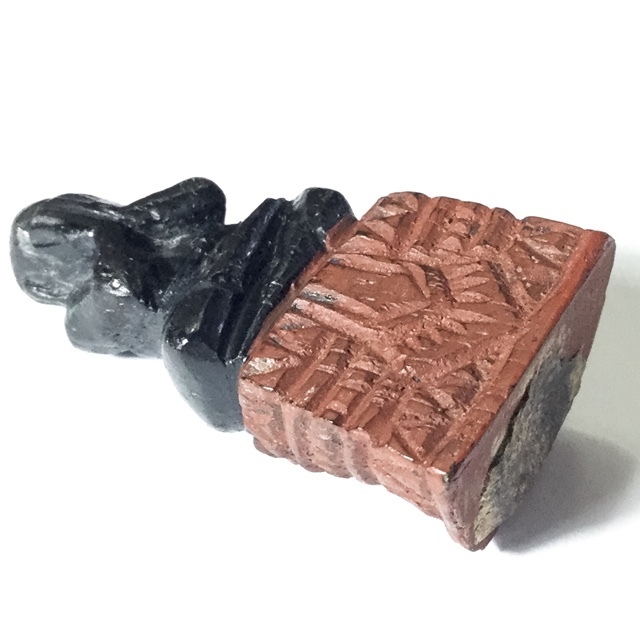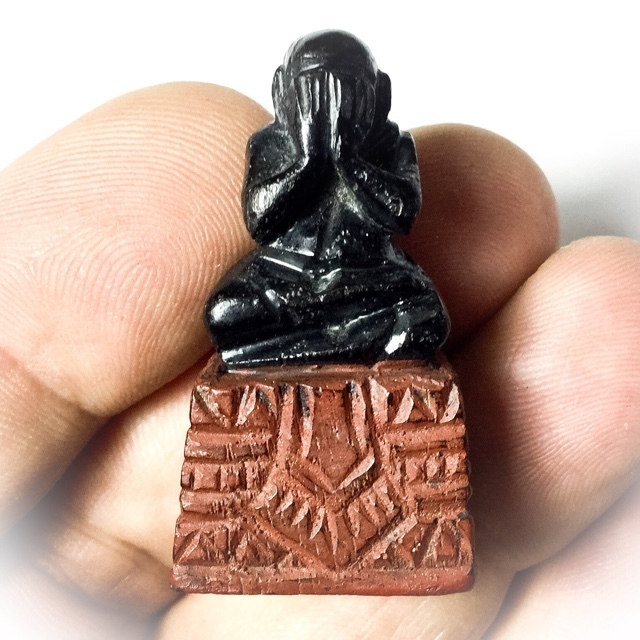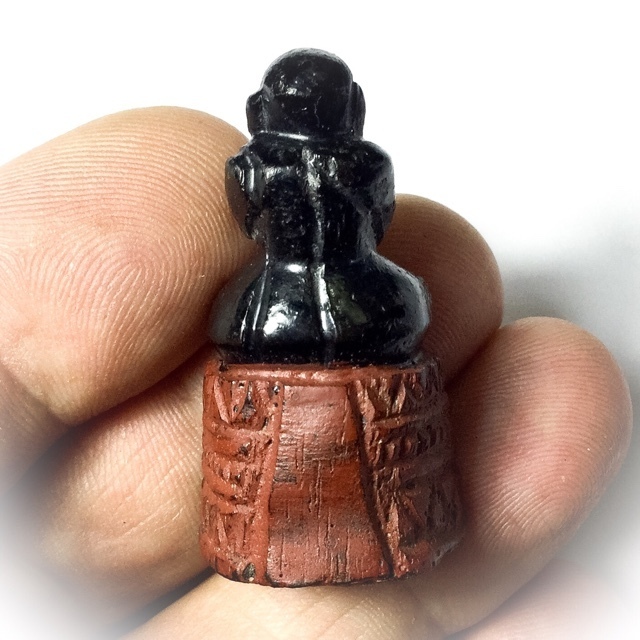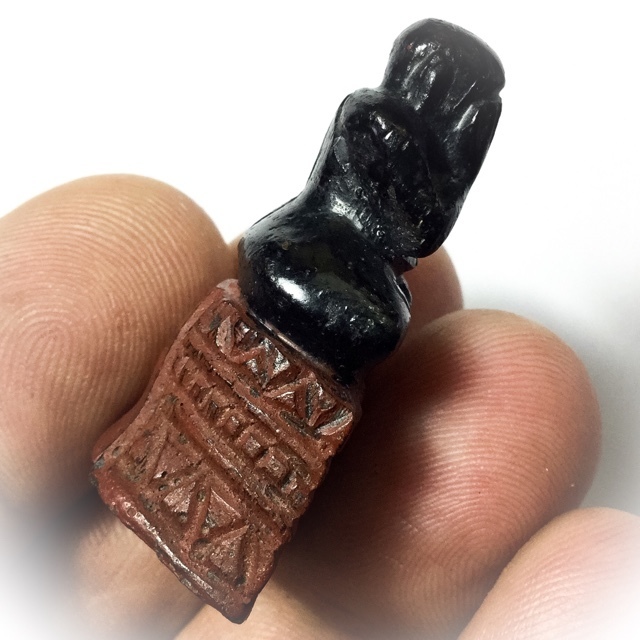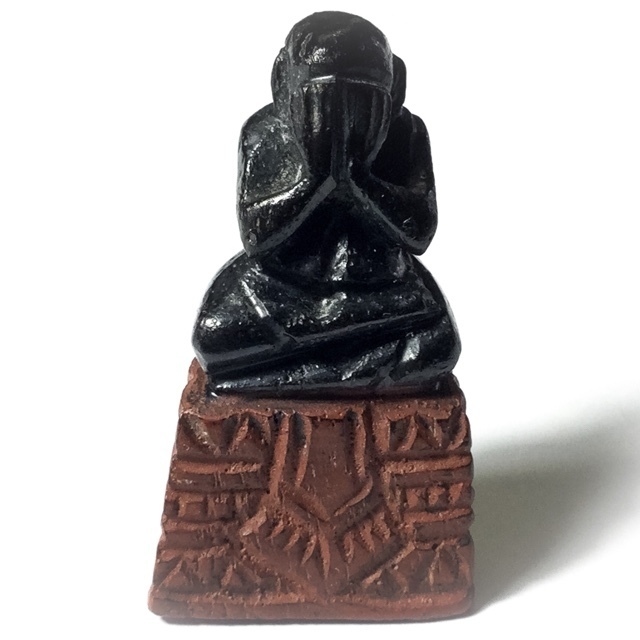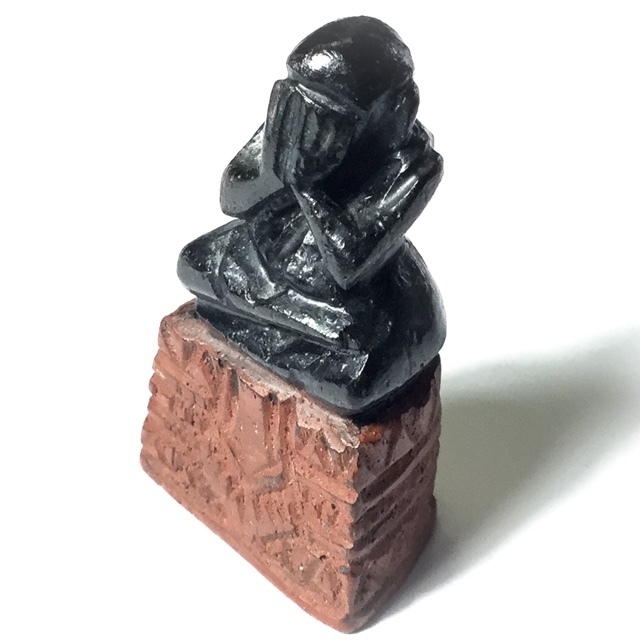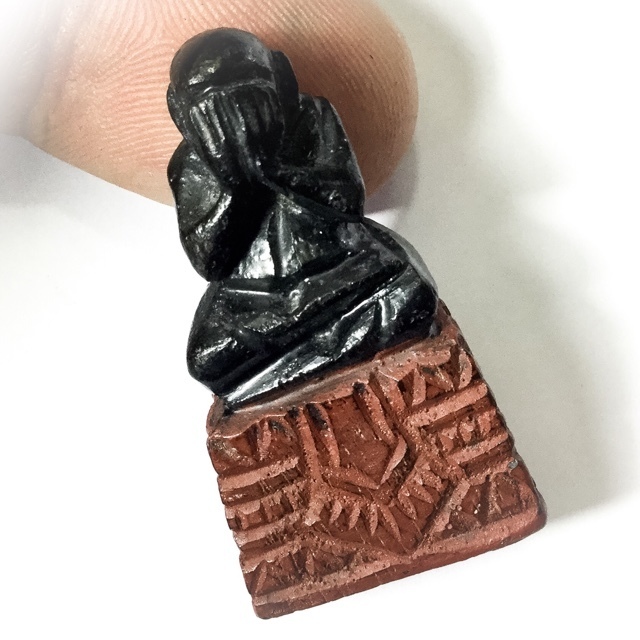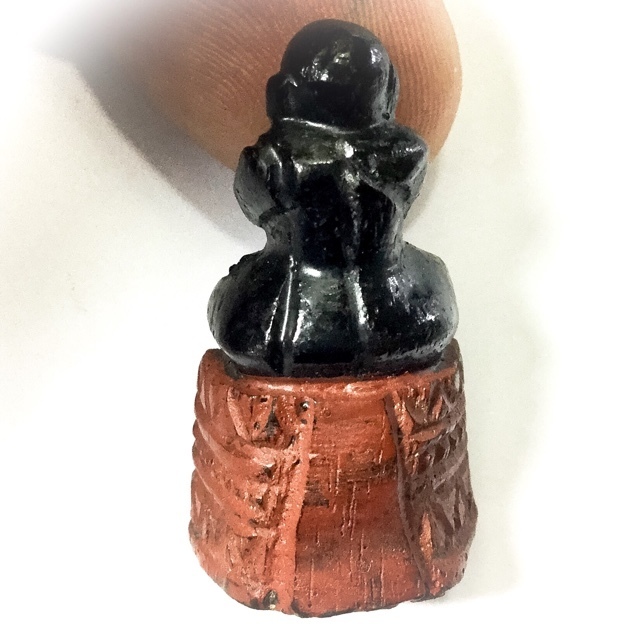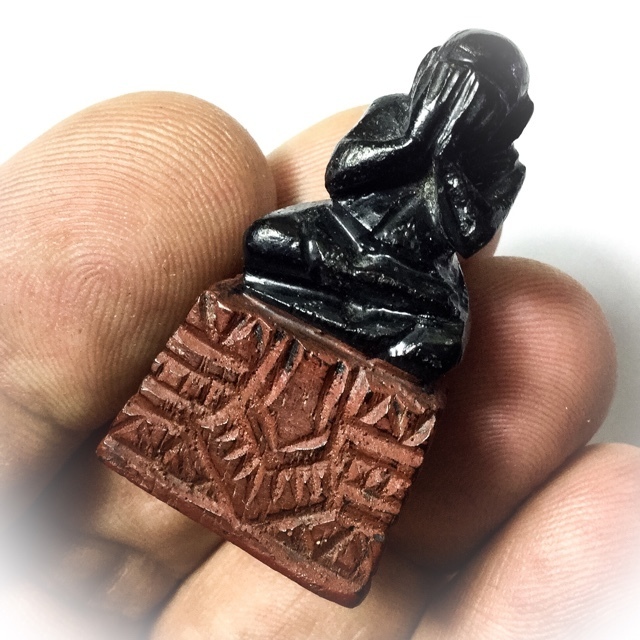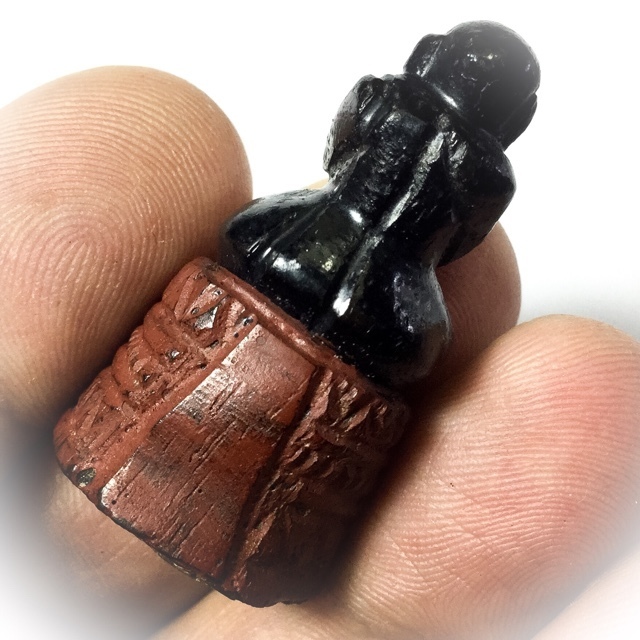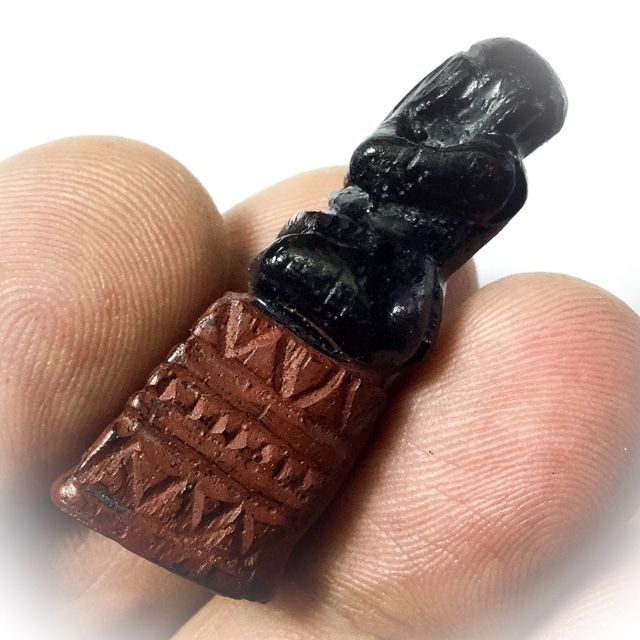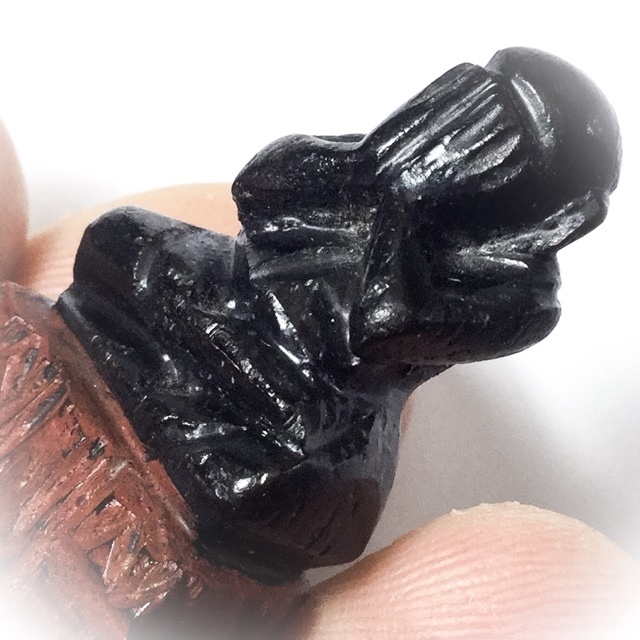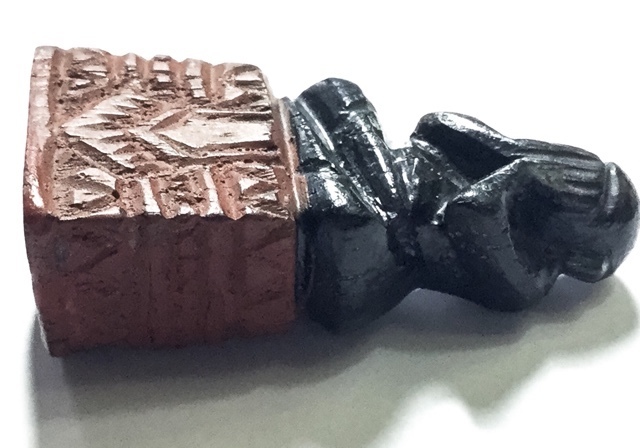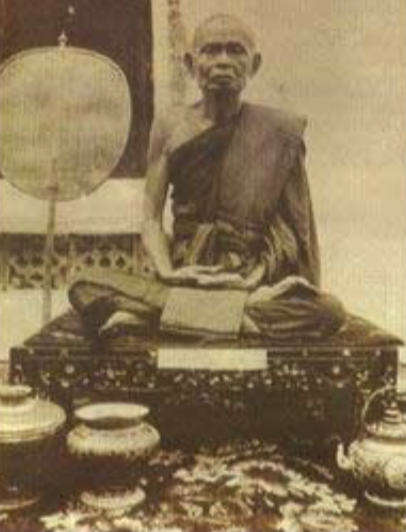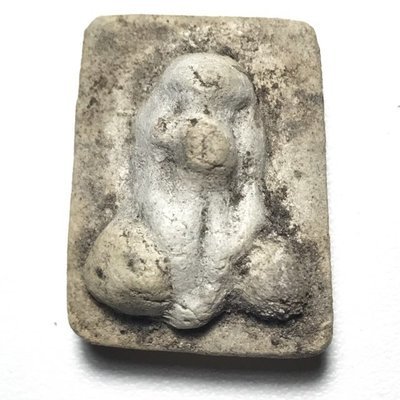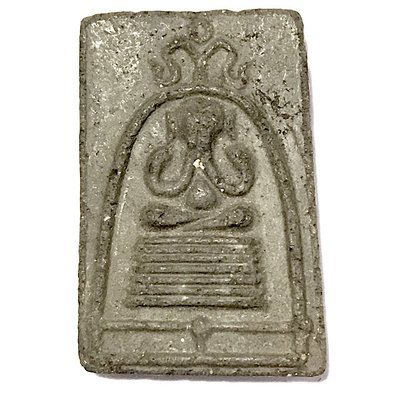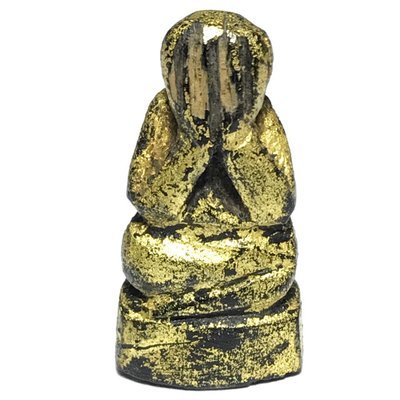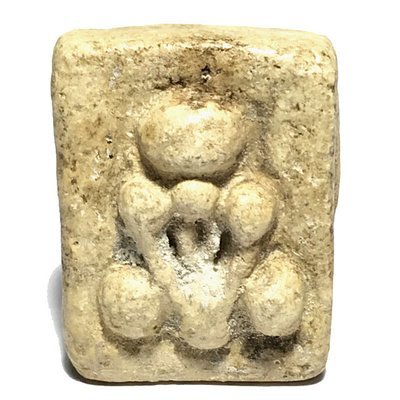
Ancient Amulet Store – Purveyors of preferred Classic Thai Buddhist Amulets for the True Devotee and Distinguished Collector
Discover the immensely deep and fascinating world of Vintage Thai Buddhist Amulets. Ancient Amulet is a long term established and internationally recognized Vintage Amulet Shop, and A Trusted Source for Classic Thai Buddhist Amulets for Devotees and Discerning Collectors, and is one of the many sub projects of informational sources created by Thai Amulet, Buddhism and Thai Occult Expert, Ajarn Spencer Littlewood . as part of his ‘Buddha Magic Project‘
Ancient Amulet provides authentic Antique and Rare Thai Amulets of the Pre and Early Post-Modern Era, of high esteem and Sacred Value, to revere, study and collect. Our Ancient Thai Buddhist Amulets are selected from the finest exhibits we can discover, and given diligent study and authentication processes. Our collection showcases time-honored amulets crafted by ancient masters, boasting captivating qualities and representing the esteemed Pra Niyom class. We offer authentic, highly valued ancient Thai Buddhist amulets from the pre and early post-modern eras, carefully selected from the finest exhibits and thoroughly examined. We invite you to study, revere, and collect these classic amulets from ancient masters, and to learn about their magical aspects and the art of amulet evaluation
Pra Pid Ta Thaan Sung Circa 2450 BE Long Rak Ud Channaroeng - Luang Phu Iam Wat Hnang
Famous Classic Pra Niyom Master Class Ancient Amulet from the Great Luang Phu Iam Suwannasarō (2375 - 2469 BE), of Wat Hnang (and Wat Ko Non). This model is a Pim Thaan Sung (High Dais) - Mai Gae (carved wood) Long Rak (herbal laquer coating) Ud Krang Channaroeng (with Channaroeng Bees-nest paste).
Released in the Era that Luang Phu Iam was already abbot of Wat Hnang, in the decade between 2445 and 2450 BE. The Pra Pid Ta is a hand carved wooden loi ongk statuette of a Buddha closing his orifices, entering the state of Nirodha (cessation of suffering). The Buddha has been coated in black herbal lacquer which was a common practice in Olden days, to preserve amulets and give them a long life.
It is said that Luang Phu Iam began to release hand carved wooden Pra Pid Ta around the year 2448 BE, but that he had made these and other amulets, since the times he was still following his Mentor Luang Phu Rod, at Wat Ko Non. He began to make amulets long before his first edition Pra Pid Ta Yant Yung and Pra Pid Ta Pid Tawarn, which were released at Wat Hnang around 2440 - 2443 BE.
His famous and incredibly expensive Pra Pid Ta Yant Yung/Pid Tawarn were made from metallic alchemical metals, after Luang Phu Iam had moved there as abbot, and were made one by one, in the same method as Pra Pid Ta Wat Tong of Luang Por Tap (No.1 Pra Pid Ta Amulet of all Time).
The base (Dais) of the statuette is covered in a red herbal laquer. The image is finely carved and oustanding in appearance, and would be as fitting on a small Pan Kroo Bucha receptacle on an altar, as it would be encased as an amulet to wear as pendant. In our opinion, Solid Gold Custom Casing would be a recommendable option for such an outstanding and famous sacred amulet.
Luang Phu Iam was a World Famous Master Monk of the previous Century, and maker of the Number 2 Amulet of the Top 5 'Benjapakee' of Pra Pid Ta of all Thai Buddhist History, the Pra Pid Ta. His most famed of all were the Pra Pid Ta Yant Yung and Pra Pid Tawarn amulet.
Luang Phu Iam also made a large variety of other Pra Pid Ta amulets, many of them being originals from different artisans who hand carved them from various saแred woods, ivory, and other materials.
This Pra Pid Ta Thaan Sung is a very rare, but well documented model, which stands out for its high dais upon which the Buddha is seated. The base of the statuette is filled with Channaroeng paste from the Sacred Beestnest, and pressed into the hollow base, where a thumbprint of the Master can be seen imprinted on the Muan Sarn.
Luang Phu Iam is the No.2 Master of all History, renowned for Pra Pid Ta Amulets, and his Rare and Powerful First Edition 2467 BE Monk Coin, which fetches extremely high prices in auctions (Circa 100 Thousand $).
Pra Pāwanā Gosol Thēra (Luang Phu Iam Suwannasārõ)
Luang Phu Iam was a born on Friday the 7th October 2375 BE. Luang Phu Iam was born a Citizen of Bang Khun Tian, whose household lived on the banks of the Klong Bang Hwa Canal, behind the temple of Wat Hnang. Luang Phu Iam was born during the reign of His Majesty Prabat Somdej Pra Nang Glao Jao Yuu Hua King Rama 3.
Luang Phu Iam was given the birthname of ‘Iam’ and his surname was ‘Tong U’. The devotees of Wat Hnang temple did not call him Luang Phu Iam, rather, preferred to call him ‘Luang Por Phu Tao’.
People in General, and the collectors of the amulet appreciation societies like to refer to Luang Phu Iam as ‘Luang Por Wat Hnang’. His father and mother’s names were Mr. Tong, and Mrs. U, with the surname ‘Tong U’.
Luang Phu Iam’s family were market gardners, and were relatively prosperous. At the age of 9 years old, Luang Phu Iam was taken to the temple of Wat Hnang, to learn to read and write, and practice Khom Agkhara, under the tutelage of his first mentor, Luang Phu Rod, then Vice Abbot of Wat Hnang.
In the year 2387 BE, Luang Phu Rod then began to teach him Wicha Akom Buddha Magic and also to teach him in the Pali Sanskrit scripts, and the Khom Agkhara used for Magical Inscriptions. At the age of 11, in the year 2386 BE, Luang Phu Iam also went to study Pali Sanskrit with Pra Maha Yim at Wat Bovornives Voraviharn.
After he finished his studies with Pra Maha Yim, Luang Phu Rod then went to practice under the tutelage of Pra Pidok Gosol (Luang Por Chim), at Wat Liab.
Thereafter, he returned to Wat Hnang, and ordained as a Samanera Novice Monk, and studied the Dhamma in his original place of learning at Wat Hnang. Luang Phu spent many years focused on study and practice, for about one decade, until the year 2394 BE.
Luang Phu was now coming of age where he should ordain from Samanera to become full status of an adult Bhikkhu, and had to go to the Royal Sanam Luang to take his Pali Sanskrit exams, which were at that time, done orally, answering in front of the teacher without any written questions to answer. Luang Phu did not pass the test. Because of failing his Pali exam, Luang Phu decided to disrobe and go to help his parents and relatives at home.
But Luang Phu only managed to remain a layman for three years, and his true calling became evident, and Luang Phu returned in the year 2397 BE to Re-Ordain as a Bhikkhu in the Buddha Sasanā at Wat Jom Tong, at the age of 22 years old.
Luang Por Gerd was his Upachaya Ordaining Officer, and gave Luang Phu Iam the Ordained Name of ‘Suwannasaro’.
His Pra Gammawājājārn was Pra Tamma Chedi (Luang Por Jeen), with Pra Pawanā Gosol Thēra (Luang Phu Rod) as his Prompting Officer.
Once he had Re-Ordained again, Luang Phu Tao (Luang Phu Iam) went to stay at Wat Nang Nong, which was across the other side of the path to Wat Nang Nong. Here he continued his written studies of the Dhamma and Sorcery Grimoires, and Mastery of various Wicha, in the Samnak of Luang Por Jeen, with supplementary tuition from Pra Sangworn Wimol (Luang Por Hmen).
This time Luang Phu Iam went to finish his exams once more at Sanam Luang, and passed with flying colours. The ordained professor of Pali who was examining him, then said he had given very good translations, and invited Luang Phu Iam to come and practice at the same Samnak.
Luang Phu Iam however, refused, and continued with his usual trajectory. He then focused deeper on his practice of Vipassana Mindfulness Practice, and Puttakom (Buddha Magic) with Luang Phu Rod (who was now abbot of Wat Nang Nong).
It can be seen from historical documentation, that Luang Phu Iam followed the footsteps of of Luang Phu Rod, in the same way that Somdej Pra Puttajarn (Dto) Prohmrangsri of Wat Rakang Kositaram had followed in the footsteps of his Mentor Pra Sangkarach (Sukh Gai Thuean). Luang Phu Iam hense masters the various Wicha with his diligence and unquestioning service to Luang Phu Rod as his Mentor.
This comparison is also extendible to the amulets of both Masters, just as Somdej Pra Puttajarn (Dto) Prohmrangsri learned the Wicha Pra Somdej from Somdej Pra Sangkarach Sukh (maker of the Pra Somdej Arahang Benjapakee Amulet), so, in turn, did Luang Phu Iam make powerful Pra Pid Ta and Pra Pid Tawarn amulets, in the same Dtamra (formula) of his Mentor Luang Phu Rod.
The third Comparison between the two Monks, reveals that both Somdej Pra Puttajarn (Dto) Prohmrangsri and Luang Phu Iam managed to attain the same fame and reverence as their Mentors, and their amulets became equally reputed for their magical power.
Luang Phu Iam created the same style of imagery as Luang Phu Rod for both kinds of Pid Ta amulets, and his Wicha is so equal in power to that of Luang Phu Rod, that one will often seen devotees collecting the amulets of both masters with equal fervency. It is not uncommon to see a high-end collector wearing a Pra Pid Ta Luang Phu Iam, alongside a Pra Pid Ta Luang Phu Rod on the same necklace.
Some time after the passing of his Mentor Luang Phu Rod, in the year 2441 BE, Luang Phu Iam was called upon by his Majesty King Prabat Somdej Pra Julajom Glao Jao Yu Hua (Rama 5), to become the abbot of Wat Hnang, and perform the duty of its maintenance and further development.
Luang Phu Iam proved to be a Great Abbot, and diligently restored and developed the temple and its facilities. Luang Phu Iam was a highly favoured Monk of His Majesty King Rama 5, and was more often than not always requested to attend the most important Blessing Ceremonies, and Buddhist Rituals of the Royal Palace. His name 'Pra Pawana Gosol' was bestowed upon him by his Majesty the King, at the time he was given the charge of Wat Hnang temple.
Luang Phu Iam then spent 27 Years working selflessly for the temple and devotees of Wat Hnang, for another 27 years, until his passing on the 26th April 2469 BE, at the age of 94. His Pid Ta Yant Yung metallic amulet is equally highly regarded for its Klaew Klaad Kong Grapan Chadtri Maha Ud power, as the famous Pra Pid Ta Rae Bang Phai, and the Pra Pid Ta Wat Tong, and the Pra Pid Ta Pim Tapap of Wat Sapan Sung.
Various Kata Chants for Pra Pid Ta amulets
